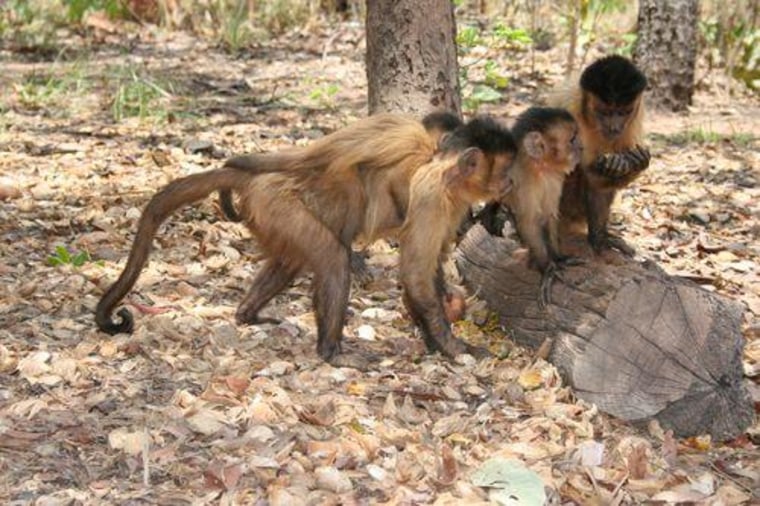"The Nutcracker" ballet may feature a mouse king, but wild bearded capuchin monkeys are the real nut-cracking kings. New research found that these animals put together their own nut-cracking devices and are experts at using them.
The findings place wild bearded capuchin monkeys in the league of animal tool pros that are extremely selective about their instruments. Stars of this group include humans, chimpanzees, New Caledonian crows, and even earthworms. (As Charles Darwin observed, earthworms take time to select just the right sized leaves, bits of paper, and other items to close off their burrows.)
For the new Animal Behaviour study on monkeys, Qing Liu of the University of Georgia led an international team of scientists in analyzing how the diminutive primates crack nuts with a hammer and anvil nut-cracking device. The "hammer" consists of stones chosen by the hungry monkey. The "anvil" is a wooden surface, such as a log, with a pit banged into the top. Many such anvils were around for the monkeys to choose.
The wild bearded capuchin monkeys voluntarily participated in the experiments at a private property called Fazenda Boa Vista in a dry woodland plain in Piauí, Brazil. In fact, the monkeys eagerly awaited their moment to take a literal crack at the nuts.
"In our study group, (monkey) members often waited in nearby trees for their turn to crack nuts," Liu and team wrote. "The visibility was good, with little or no obstruction from foliage between tree limbs and the anvil."
When it was a monkey's turn, the monkey didn't just randomly whack at the nuts. Instead, the "capuchins are sensitive to certain properties of the pits they use in nut-cracking, preferring to use pits that require the fewest strikes to crack nuts," according to the researchers.
"Capuchins assessed the effectiveness of the pits either by positioning the nut, using the nut as an extension of their hand, or by striking the nut with the stone, thereby indirectly gaining information about the pit."
It sometimes took the monkeys a bit of time to perfect their nut-cracking technique, the study indicates. For example, "fly-off rate was significantly higher in shallow pits than in medium pits," with nuts and shells shooting into the air at times.
Overall, however, the monkeys preferred the most effective anvil pits, based on the number of first strikes, total strikes and nuts cracked. Their success was due to learning from others by observation as well as by trial and error, not unlike how humans learn to use gadgets.
Monkeys have a few other nutcracking tricks too, according to the study. When given a choice, they prefer nuts with low resistance shells that are easier to crack. They also prefer to select huge, heavy stones that can really smash the shells. Finally, they use their entire body during the nutcracking process, as you'll see in this memorable segment from Discovery Channel's "Life" series.
